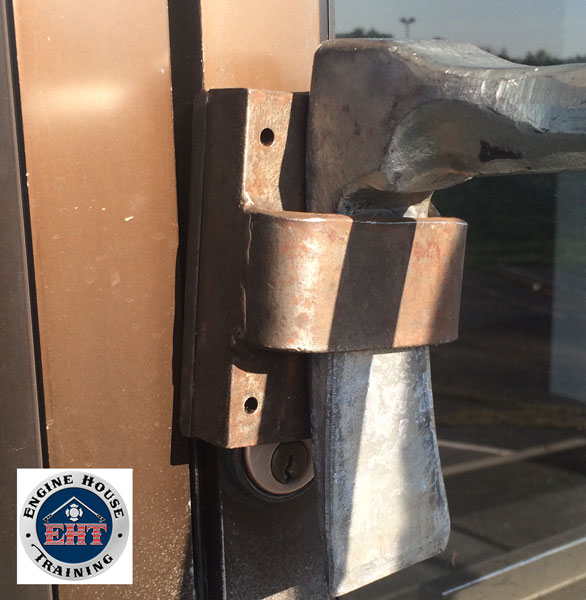
By Brian Zaitz
Everyone has run that call–the 3 a.m. automatic alarm at the big box store. You arrive to find no smoke or fire showing but hear an audible alarm. You head to the Knox box for keys only to find they no longer work or are missing. So how are you going to gain access to the interior? There are several options, one being waiting for a key holder; this typically takes between 30-60 minutes, which is not ideal if there is an actual event taking place. You could break the front glass doors and gain access; this is quick, however is very costly if there is not active fire and leaves the building unsecure for an extended period. In addition, if there is fire, you have lost control of your door and have an uncontrollable flow path into a large box structure. Option three is to force the door by pulling the cylinder and picking the lock. Sound complicated? Not at all, with practice.
Through-the-lock forcible entry is a quick, efficient, and professional means of gaining access to a commercial structure. Normal commercial doors use a locking cylinder held in place with a setscrew that works in conjunction with the locking mechanism and mortise. The mortise acts as the strength and slides or turns into the adjacent door or door jamb to lock the door. To force these types of doors, simply pull the cylinder using a K-tool, Rex Tool, or A-Tool to expose the inner locking mechanism. This is typically done with little force, as the cylinder only has to overcome the strength of a setscrew. Once exposed, take the pick and depress the cam in the locking mechanism. Depressed, the mechanism can move freely. Simply slide it from the opposite position. Locks vary, however the movement is from the 4 o’clock to 8 o’clock or 2 o’clock to 10 o’clock position.
Once open, you will have full access to the building and can conduct your investigation. Once completed, you can relock the door with the pick and secure the building. The total cost of your investigation is around 20 dollars for a new lock cylinder, a fraction of the cost of a new front glass door. In addition, you are able to leave the structure secure and operable for the next business day.
Through-the-lock forcible entry is a key skill set for every firefighter, since every district and department have some commercial occupancies. Next time you are at the grocery store picking up dinner or at a fire alarm during the day, take the opportunity to look at the locks.
Download this week’s drill as a PDF HERE (347 KB).
Brian Zaitz is a 14-year student of the fire service, currently assigned as the captain/training officer with the Metro West (MO) Fire Protection District. Brian is an instructor with Engine House Training, LLC as well as instructor at the St. Louis County Fire Academy. Brian holds several degrees, including an associates in paramedic technology, a bachelors in fire science management, and a masters in human resource development. Brian is currently and accredited chief training officer and student of the National Fire Academy’s Executive Fire Officer Program.
MORE THROW BACK TO BASICS
-
Rotary Saws
- The Three Cs of Ventilation
- Webbing
- Exposures
- Firefighter Bailout
-
Air Bags
- Ground Ladder Markings
RELATED TRAINING


